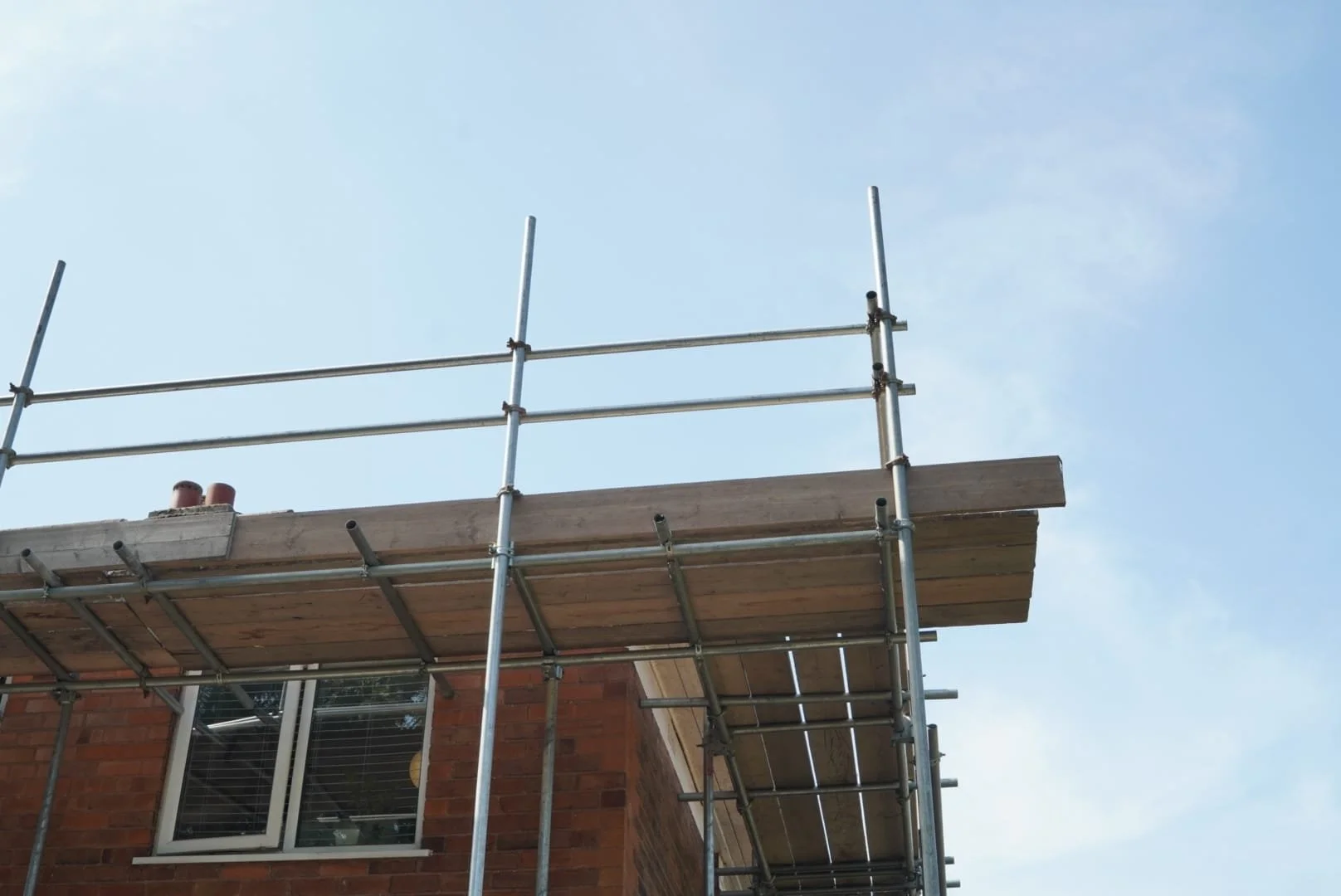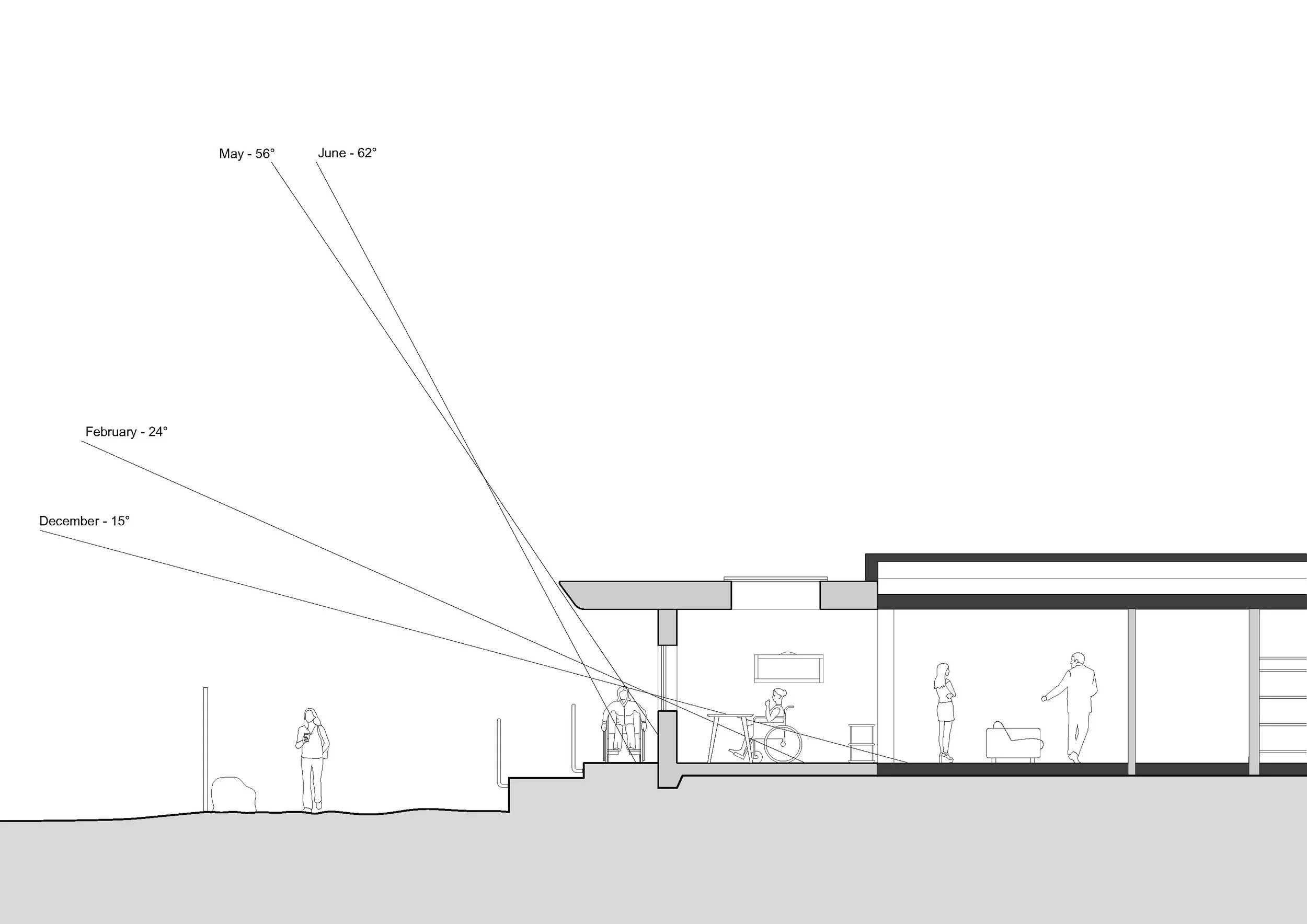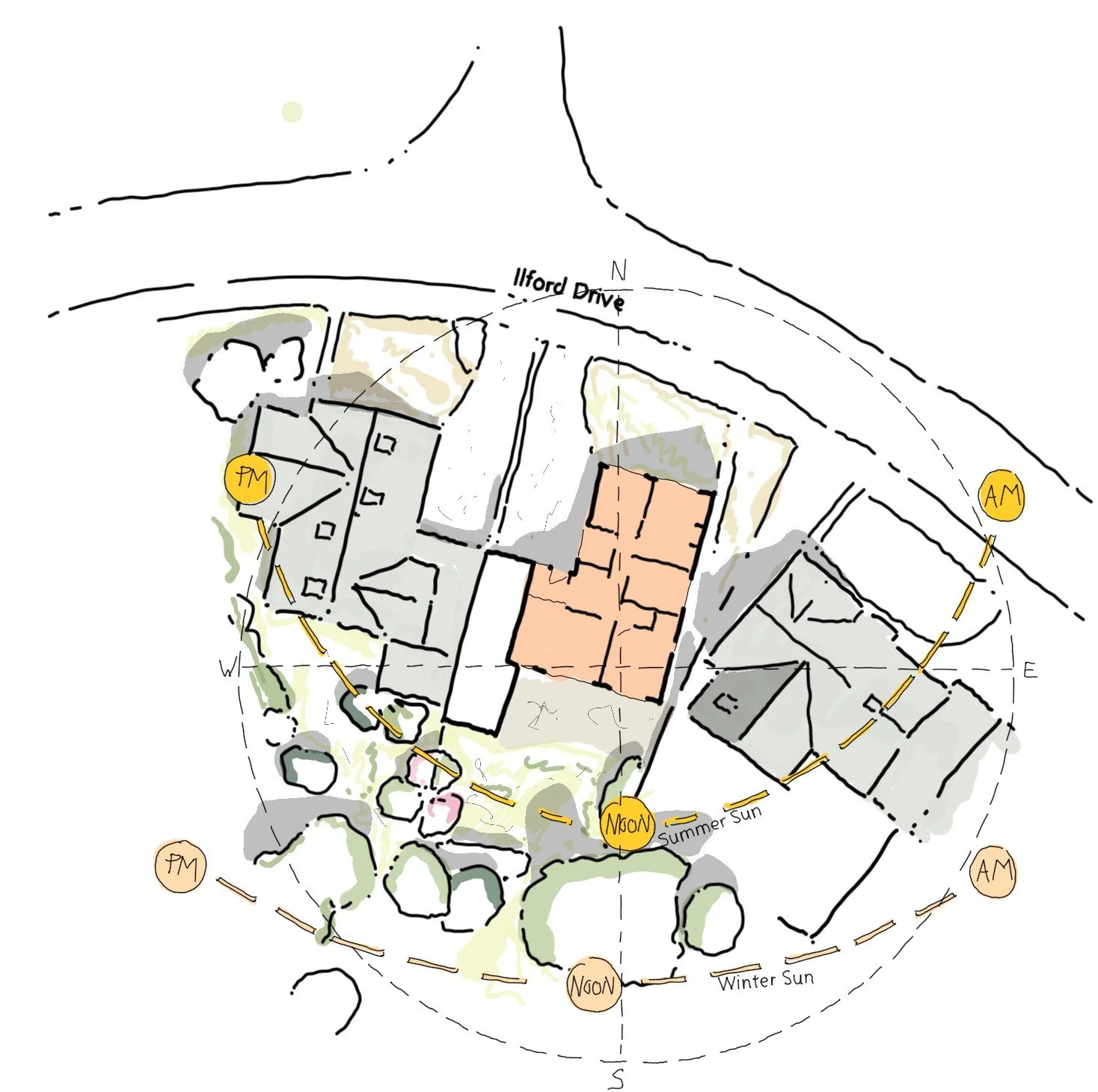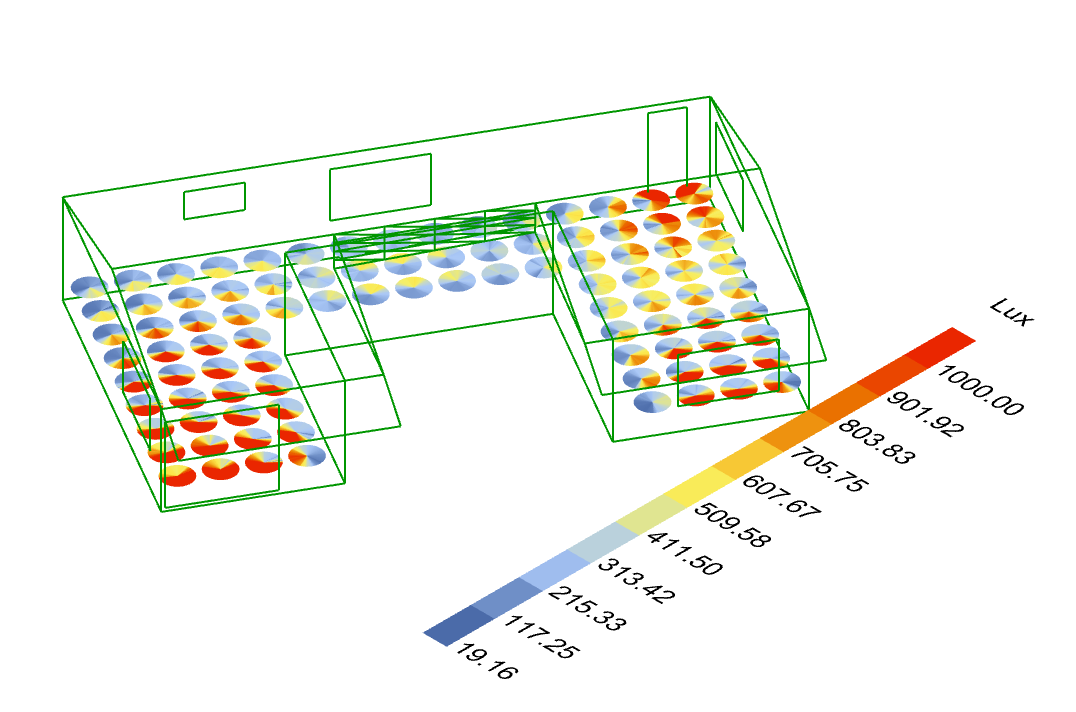Preventing Overheating in Eco Homes
We help Maximise Your Rental Income with Eco-homes and Luxury Holiday Homes, provided by RIBA Chartered Architects.
How Overheating Can Ruin Your Eco-Home
Whilst the UK is often thought of as a cold country, at the time of writing, July 2025, we’re in the midst of our fourth heatwave. Two of those heatwaves occurred earlier in the spring. More and more, conversations with clients and homeowners are focused on one thing: will the space overheat in summer? And they’re right to be concerned.
The Problem with Architect-Designed Homes
Too often, even architect-designed homes suffer from an excess of south-facing glazing. Large windows and open views can be incredibly seductive on paper, but if not properly designed to consider solar gain and shading, they can quickly lead to overheating. This is particularly noticeable in the spring and summer months, when certain rooms can become uncomfortably hot, at worth even unusable.
Here are a few key considerations we recommend addressing early in the design stage to help prevent overheating and create a home that stays comfortable all year round.
We’re currently having our roof replaced, and an unexpected benefit has been the scaffold boards extending beyond the window. Acting like a temporary pergola, they block direct sunlight and noticeably reduce indoor heat gain. Right now, it’s 34°C outside — yet inside, it’s a comfortable 26°C.
Understand the Site and Orientation
Making the most of the winter sun while protecting against excessive summer heat starts with careful orientation. East- and west-facing glazing can contribute to overheating due to low-angle sun, so we look to minimise these or add effective external shading. South-facing glazing, when sized thoughtfully and paired with well-designed overhangs or shading, can deliver welcome light while limiting summer gains.
One of the simplest and most effective tools for controlling overheating is planting deciduous trees, which provide shade in summer and allow sunlight through in winter, a perfect natural complement to any eco-home, whilst acting as an affordable solution.
Optimise Glazing and Solar Control
Large areas of glazing can create beautiful views and a strong connection to the outdoors, but they must be carefully managed to avoid overheating. Combining high-performance solar-control glass with thoughtful shading strategies, like external shutters or pergolas, can help maintain comfortable indoor temperatures while still maximising natural light.
Well-placed deciduous planting can also work in harmony with these measures, providing dynamic, seasonal shading that adapts naturally over the year.
Speak to Peter the Architect
Book Your Free 20-Minute Eco-Home Strategy Call
Overheating is a significant risk in eco-home design. Once it’s built, it’s costly to rectify. A quick call helps you avoid these issues early and shape a design that performs properly. On this free call, we can cover:
• Whether your design is at risk of overheating based on glazing, orientation, and layout
• Simple design changes that dramatically reduce heat gain
• How to integrate shading, ventilation, and solar control from the outset
• What future climate projections mean for your project
• How to create a comfortable, resilient home that performs year-round
Section drawing showing seasonal sun angles and their impact on interior light and heat gain. In summer, the higher sun is blocked by the roof overhang to prevent overheating, while in winter the lower sun penetrates deeper into the space, providing passive warmth.
Prioritise Cross Ventilation
Airflow is one of the most overlooked design tools. With the right window placement and vent positioning, you can create natural cross ventilation that flushes out warm air and draws in cooler breezes — all without switching on a fan or air conditioner.
Incorporate Thermal Mass
Lightweight timber structures, while great from a sustainability perspective, heat up quickly. By integrating materials with thermal mass, such as exposed stone, concrete, or clay plasters, you create a natural heat buffer. These materials absorb warmth during the day and release it slowly at night, especially effective when paired with nighttime ventilation.
Site orientation diagram for an eco-home project near Coventry, highlighting how seasonal sun paths influence building placement and shading. Morning, midday, and afternoon sun positions are marked to inform design choices that maximise natural light, provide effective shading, and prevent overheating.
Future-Proof with Climate Resilience
With UK summers set to get hotter and drier, we need to design for the climate 30–50 years ahead, not just today. Eco-homes need to be modelled against future climate scenarios to ensure your home remains comfortable, adaptable, and energy-efficient for decades to come.
Daylight and overheating analysis for a proposed south-facing shipping container holiday home. Using Ladybug Rhino, we modelled LUX levels to ensure the design captures natural light without causing excessive summer heat gain.




